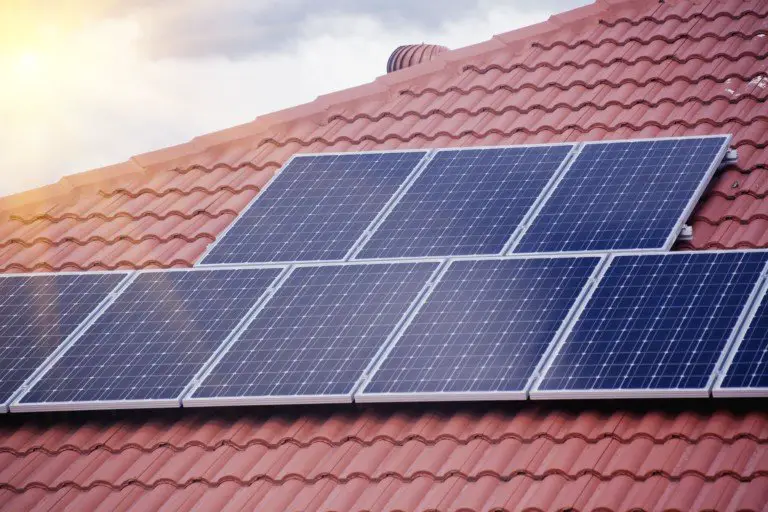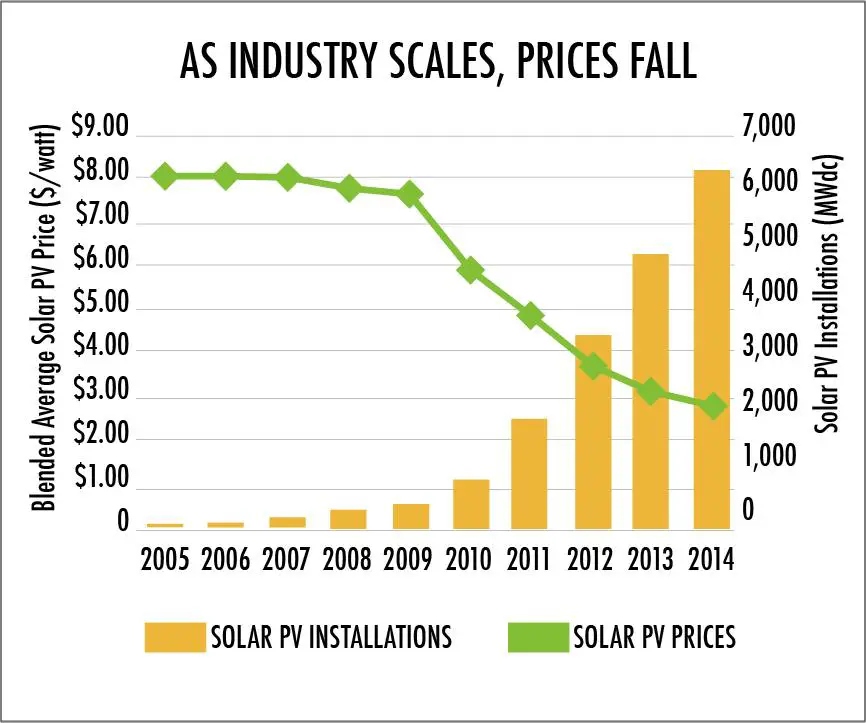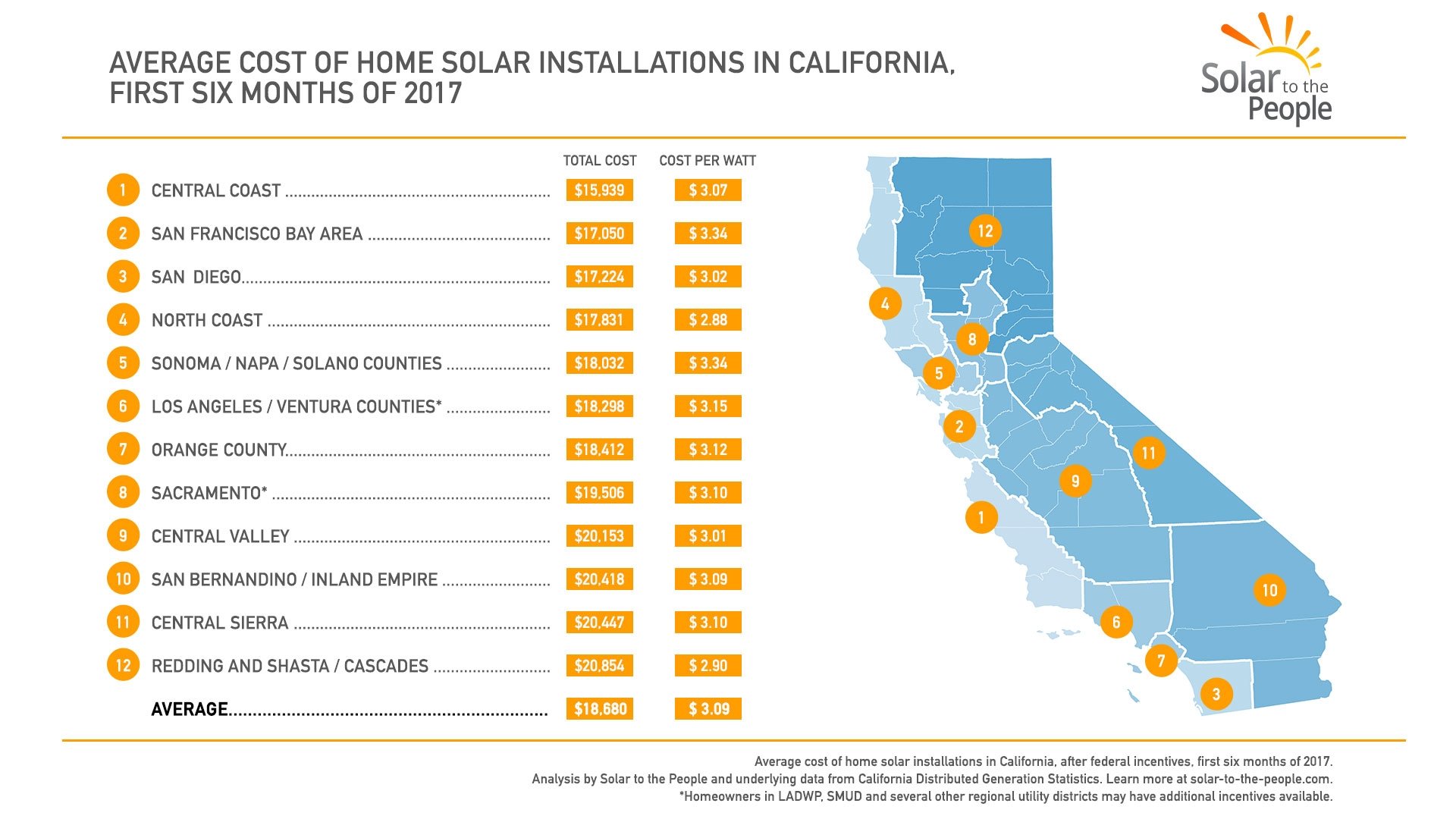How Much Do Solar Panels Save
Switching to a solar energy system could potentially cut your energy bill by 75%. The savings you and your family see will depend greatly on where you live, what the climate is like and your particular energy needs. For instance, an average homeowner in Portland, Oregon, will see total savings of $38,000, whereas a homeowner in Los Angeles could save as much as $90,000 over 20 years.
Many solar energy companies provide a free calculator tool to help you easily estimate the cost and savings of installing solar panels on your home. Different solar calculators may estimate electricity costs in different ways. Numbers can be based on the national average, regional averages or other information you provide.
The average American electric bill is between $100 and $200 per month, and the average yearly energy cost is about $1,500. Depending on how much you pay out-of-pocket for the solar panel system, it could take five to 15 years to break even. To calculate how long it will take you to break even on savings versus the cost of your solar panels, first subtract your incentives and rebates from your costs. Divide that number by the amount you are saving on utility bills per year.
Even if your solar panels generate 100% of your electricity needs, you may still receive a utility bill. However, instead of asking for payments, you will get net metering credits for the month.
The Solar Tax Credit: Solars Best Incentive
The best incentive for going solar in the country is the federal solar tax credit, or the investment tax credit . This incentive allows you to deduct 26 percent of the cost of installing solar panels from your federal taxes, and theres no cap on its value. For example, a 10 kW system priced at the national average comes out to $27,600. However, with the ITC, youd be able to deduct 26 percent of that cost, or $7,176, from your taxes. This essentially reduces the cost of your system to the $20,424 price tag we highlighted at the beginning of this article.
What Is The Roi On Solar Panels
You can calculate the return on investment for installing solar panels by calculating your total payback. Calculate the amount you spent to install a solar panel system and then figure out the amount you will save on energy bills monthly. These two numbers show how quickly your savings will cover your initial costs. Electricity rates will vary by region, being higher in the Northeast than in the Northwest. Solar tends to be more cost effective where electricity prices are high and sunshine is abundant.
40 percent of homeowners
Also Check: Does A Solo 401k Need An Ein
Understanding The Solar Investment Tax Credit
As we alluded to earlier, the ITC has been an overall boon to the expansion and health of the solar industry. As of 2021, the ITC reduces the cost of installing solar panels by 26%, and its a large reason the solar industry has consistently experienced a 42% annual growth rate for the past decade.
Unfortunately, the residential ITC is set to completely expire by 2024, with the ramp down already happening now. Thankfully, solar panel installations costs overall have decreased during the life of the ITC, but the solar panel industry is still preparing for a slowdown in installations in the short-term future. Therefore, if there was any time to consider solar panels for your home, the time is now. The discount is only going to decrease.
Type Of Solar Panels And Other Equipment Costs

There are three basic types of solar panels, two of which are commonly used residentially: monocrystalline and polycrystalline panels. Monocrystalline panels tend to be more energy-efficient, which can lead to greater savings in the long run, but theyre also a bit pricier on the front end.
That being said, solar panel efficiency is the name of the game for most homeowners who aim to install a system on their roof, as theyll likely have less space to work with than commercial solar projects or ground-mounted solar panel systems will.
Other components you may need to purchase include inverters, wiring, charge controllers, mounts, solar batteries and more. Consider how much backup power is a priority for your home backup batteries will add some costs on the front end, but additional safety and savings on the back.
Also Check: How Does A Sole Proprietorship Work
Average Cost To Install Solar Panels
Theres a lot that goes into the price a solar installer charges you for your customized solar panel installation. Solar installs are a unique product: the price you pay is heavily dependent on your unique usage and factors related to your electricity needs and property. Here are some of the top factors to keep in mind that can influence the cost of solar panels for your home:
Solaria Sonal Panels Price
Solaria solar panels cost $2.80 a watt. This translates to $14,820 to $18,780 for a 6kW system fully installed. Several factors influence your final installation costs, including location, roof pitch, and inverter type. Solaria specializes in panels that are all black in color, which improves their appearance and aesthetics on your roof. Their panels are also highly efficient and designed to work in many circumstances.
Don’t Miss: Does The Government Pay For Solar Panels
Cost To Move Solar Panels
If you need to move your solar panels or remove them to have work done on your roof before reinstalling, this can cost between $4,000 and $8,000. Moving panels is difficult and requires carefully unmounting them, removing them, taking them to their new location, and then completely setting them up and rewiring them. This takes time, and like the initial install, it has a range of costs depending on things like the roof type, pitch, and location.
Average Cost Of Residential Solar Keeps Falling
Solar panels are rapidly spreading over American rooftops. And as the cost of solar continues to fall, its no surprise that residential solar systems are installed every 100 seconds in the United States.1 Residential solar costs are at their lowest in over 30 years. More affordable than ever, todays residential solar panels feature technology advances that maximize power production.
Average cost of residential solar keeps falling. Residential solar costs are at their lowest in over 30 years. More affordable than ever, todays residential solar panels feature technology advances that maximize power production.
Also Check: How Much Energy Should My Solar Panels Produce
Calculating Your Solar Payback Period
Now that you know the factors that contribute to combined costs and combined benefits of installing solar panels, you can now calculate your solar panel payback period.
To do this, follow these steps:
1. Determine Combined Costs
- Subtract the value of all incentives and rebates you quality for from the gross cost of your solar panel system.
2. Determine annual benefits
- Add up all the annual financial benefits you could receive, such as avoided electricity costs.
3. Divide your combined costs by your annual financial benefits
- This number represents the number of years it will take to achieve your solar panel payback period. After this time, you have surpassed the break even point and can now reap the full financial benefits of your solar panel system.
Bifacial Solar Panel Cost Calculator
Bifacial solar panels have a range of costs. They can be monocrystalline or polycrystalline and are designed to have a frame or to be completely frameless. This allows more flexibility in cost and how you install them. Below are the average costs for bifacial solar modules based on an average installation size of 10 panels.
| Bifacial Solar Panels Costs | |
|---|---|
| $750 – $900 | $1,100 – $1,400 |
Polycrystalline panels are the least expensive and most basic, while a frameless monocrystalline panel is the most expensive, versatile, and efficient. Standard installations are generally a monocrystalline panel with a frame. Each type comes in a range of watts. Each side usually has two wattages, and it is not uncommon for one side to have 250 watts while the other has 400 for a combined 650 watts per panel. Basic polycrystalline panels typically have watts ranging between 500 and 600 total, while stand monocrystalline panels have watts between 650 and 750. Some of the highest-quality panels have watts that are 800 or above. The more watts a panel has, the more energy it produces, so these panels lower your energy bills more.
You May Like: Why Solar Is Not Worth It
How Are Solar Panels Installed
In a sense, all the research youre doing now is the hardest part of installing solar panels on your home. The time between when you get a quote from a solar energy company to solar panel installation can be anywhere between one and four months. The whole process can be described in six steps:
Consider hiring a good electrical engineering consultant to look over the proposed system prior to purchase as well. This will help ensure that you get the right system for your needs.
Estimate Residential Solar Panel Cost

The brunt of the expense with solar panels is in installation and the purchase of the actual panels.
» MORE: Compare solar loans and apply
Minimal long-term expenses can make up for the upfront costs. Most systems dont require much maintenance and are designed to last for 20 years or more with little change to the amount of electricity produced, Nilsen says.
When calculating the total price, consider how much energy you regularly consume your usage is listed on your monthly utility bill and what size system will generate the amount needed. Some tools, like the SolarReviews calculator, estimate the system size for you.
With installation, an average residential 5kW size system costs between $3 and $5 per watt, according to the CSE, which results in the $15,000 to $25,000 range. That cost is before any tax credits and incentives.
If you know your current energy usage, you can calculate how much youll need to pay for solar panels.
» MORE: Calculate your monthly payments on a solar loan
Then comparison shop for solar panels as you would other big-ticket items, such as a car or TV, says Vikram Aggarwal, CEO of the solar marketplace EnergySage. Some companies lower installation costs through rebates and other programs.
Aggarwal recommends getting quotes from three to five contractors. EnergySage compiles solar companies customer reviews, certifications, Better Business Bureau profiles and other information to help you find reputable providers.
Also Check: How To Figure Out What Size Solar System I Need
Solar Inverter Cost By Type
Your solar panels may be good at producing electricity from the suns energy, but they are not enough on their own to power your home. Solar panels produce direct current or DC electricity. Most homes use AC or alternating current electricity. Therefore, an inverter is required to convert the energy from DC to AC so that your home can use the energy.
There are several types of inverters, each with attributes and costs to consider.
| Type |
|---|
| $2,000 – $2,300 |
Do Solar Panels Increase Home Value
At first glance, you may be wondering if installing a solar panel system is worth it given the price tag. But research has shown that installing solar panels can greatly increase your homes property value.
In fact, its reported that on average that your resale value is close to $6,000 for each 1 kilowatt installed. The increase can depend, however, on factors like where your home is located and how big it is. States with active solar markets yield higher returns, and larger homes generally see a bigger return of investment.
For many potential buyers, a solar system represents a home upgrade just like an added room or renovated kitchen. Solar panels can also be more cost-efficient than other electrical options, which can be enticing to potential buyers.
And beyond that, solar panels represent a commitment to clean energy alternatives, which is becoming increasingly important for all Americans.
Also Check: What Is The Best Efficiency Of Solar Panels
Utility Bill Rate Design
Good electricity rate design allows you to save money when you save energy. This might sound intuitive but not all provinces are same. Superior designs have low fixed monthly fees and tiered electricity rates. Inferior designs have high fixed fees and flat electricity rates.
British Columbia scores in the front of the pack when it comes to these factors having tiered rates and fixed monthly fees of $12.
For example, reducing your electricity bill from 1,500 to 750 kWh per month will save you 54% on your electricity bill in British Columbia, 45% in Saskatchewan, but only 41% in Alberta!
Note that fixed monthly fees dont disappear even if you switch to solar youll pay them as long as you remain connected to the grid. But this isnt a bad thing $12/mo is a small price to pay for using the grid as your back-up energy source!
The only way to completely remove your fixed costs is to go off the grid, something most homeowners in British Columbia dont do because of high battery costs.
Disconnecting from the grid also means that you wont be able to participate in your utilitys net metering program.
Additional Considerations And Costs
- Tariff exemption. While bifacial solar panels had been granted a tariff exemption under the Trump administration, this has since been overturned. Like all solar panels, bifacial panels now have an average tariff rate of 18%.
- Top manufacturers. Many top solar companies also make bifacial panels, including LG, Solaris, Suntech, SoliTek, and Canadian Solar.
- Inverters. All solar systems need inverters to work properly. This can add $400 to $3,000 to your projects cost.
- Lifespan. Bifacial modules have an average lifespan of 25 to 50 years, depending on the manufacturer, location, and upkeep.
- Usage. While bifacial panels can be used in residential settings, they are not always the best choice. You need the space to install them somewhere other than the roof, meaning some homes are not a good fit.
- Mounts. Mounting for a bifacial system can increase costs. If you choose tilting systems or elaborate patio covers, your costs are higher than a simple stand.
Read Also: How Big Does My Solar System Need To Be
Youre Our First Priorityevery Time
We believe everyone should be able to make financial decisions with confidence. And while our site doesnt feature every company or financial product available on the market, were proud that the guidance we offer, the information we provide and the tools we create are objective, independent, straightforward and free.
So how do we make money? Our partners compensate us. This may influence which products we review and write about , but it in no way affects our recommendations or advice, which are grounded in thousands of hours of research. Our partners cannot pay us to guarantee favorable reviews of their products or services.Here is a list of our partners.
Solar Panel Requirement For An Average Household
The solar panel requirement to generate electricity changes from one state to another and environmental conditions. Climatic conditions play a crucial role, as they determine how much electricity that a solar panel produces. For instance, sunnier states such as Arizona generate more power when compared with the northeastern states. It, therefore, helps in accessing the cost required for installing the solar energy plant for a household because the prices are by kW. The more the kW requirement, the more the initial investment.
Read Also: Are Solar Panels Getting Cheaper
Average Cost Of Solar Panels By Number Of Bedrooms
The number of bedrooms a home has is not a good indicator of its energy needs. But it can be a good gauge of the homes general size. If you are unsure of your size and want a very general understanding of what the costs would be to install solar energy, this can be useful information.
But every household has very different needs. The best way to determine your energy needs is to look at your electric bill for the month. Then decide how much you want to reduce your dependency on the grid to get a more accurate sense of the size and cost of your system.
| Number of Rooms |
|---|
| $15,000 – $50,000 |
What Do Solar Panels Cost

With installation, the average 5kW residential size system costs between $ 3 and $ 5 per watt, according to CSE, which results in a range of $ 15,000 to $ 25,000. The cost was before there were tax credits and incentives. If you know your current energy usage, you can calculate how much you should pay for solar panels.
You May Like: How To Calculate Kw For Solar Panels
